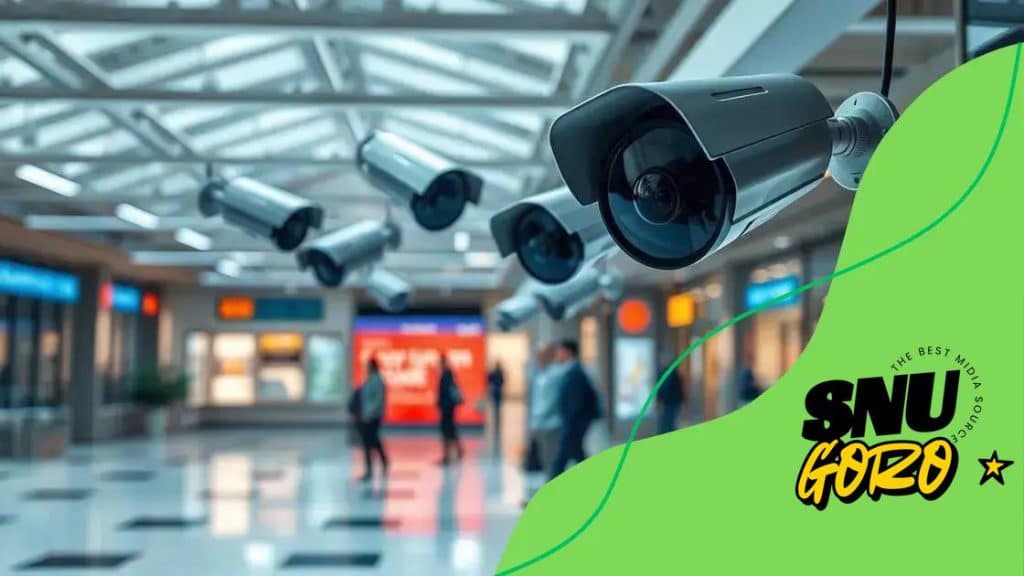The role of facial recognition in enhancing public safety

The role of facial recognition in enhancing public safety includes quick identification of suspects, crime prevention, and supporting law enforcement efforts, while also raising ethical concerns about privacy and surveillance.
The role of facial recognition in enhancing public safety is growing more significant as cities adopt advanced technologies. Have you noticed more cameras with facial recognition capabilities? This technology offers intriguing possibilities for addressing security concerns.
Understanding facial recognition technology
Facial recognition technology is changing the way we perceive safety in public spaces. It works by identifying a person’s face from a digital image or video. This technology helps in various scenarios, including law enforcement and security monitoring.
How Facial Recognition Works
This technology involves capturing an image of a person’s face and then analyzing it using complex algorithms. These algorithms look for unique facial features, creating a faceprint that is compared against databases. The process happens quickly, often in real-time.
Advantages of Facial Recognition
- Enhanced security: It helps detect potential threats faster than traditional methods.
- Accuracy: Modern systems can achieve high accuracy rates, reducing false positives.
- Ease of use: Requires minimal human intervention once set up.
While there are clear benefits, it’s important to consider the implications of privacy. Many people worry about being watched constantly, which raises ethical questions regarding surveillance in public spaces. Different regions approach these concerns in varied ways, leading to discussions about regulations that govern the use of this technology.
In addition to security applications, facial recognition is also used in businesses, such as customer analytics. For example, it can help identify loyal customers to provide better services. However, the balance between benefits and privacy concerns must be maintained as this technology evolves.
Understanding facial recognition leads us to acknowledge its potential to improve public safety while also raising questions about civil liberties and privacy.
The impact on crime prevention
The impact of facial recognition technology on crime prevention is significant and multifaceted. By utilizing advanced algorithms, this technology can identify suspects faster than traditional methods. This means that law enforcement can respond more rapidly to potential threats, enhancing overall public safety.
Benefits of Facial Recognition in Crime Prevention
One of the most profound impacts is its ability to deter crime. The knowledge that a location is under surveillance can make criminals think twice before acting. Additionally, the technology can assist in uncovering leads during investigations, allowing authorities to locate suspects and solve cases more efficiently.
Real-World Examples
- Surveillance cameras: Many cities have integrated facial recognition into their security systems.
- Automatic alerts: Some systems send alerts to law enforcement when a match is found in real-time.
- Public events safety: At large gatherings, this technology helps identify potential threats quickly.
Moreover, the integration of facial recognition with other technologies, like artificial intelligence, enhances its effectiveness. For instance, when paired with data from social media, the identification process can be even more accurate. However, there are concerns regarding the ethical implications of broad surveillance.
Privacy advocates argue that the use of facial recognition could lead to misuse, such as tracking individuals without consent. Balancing safety and privacy is a challenge that many communities face, making public dialogue essential as this technology continues to evolve.
In summary, the impact of facial recognition technology on crime prevention is profound, providing benefits to law enforcement while also prompting important discussions about privacy rights and ethical considerations.
Ethical concerns surrounding facial recognition

Ethical concerns surrounding facial recognition technology are vital to understand as its use grows. As this technology becomes more widespread, people are raising questions about privacy and surveillance. Many worry that constant monitoring infringes on personal freedoms and civil liberties.
Privacy Issues
One of the largest concerns is about how data is collected and used. Individuals often do not know when their faces are being scanned or how that data will be stored. This lack of transparency raises alarms among privacy advocates. Furthermore, the possibility of misuse exists, as this information can potentially be accessed by unauthorized parties.
Bias and Discrimination
- False positives: Facial recognition systems are not always accurate. They can misidentify individuals, leading to wrongful accusations.
- Racial bias: Studies show that these systems can struggle more with identifying faces of people from diverse backgrounds, increasing risks of discrimination.
- Surveillance state fears: The idea of being watched constantly can create a chilling effect on free speech and assembly.
As communities adopt facial recognition technology, ethical guidelines must be established. This includes developing policies that protect citizens’ rights while using the technology effectively. Governments are encouraged to involve public input in discussions, ensuring everyone’s voice is heard regarding surveillance practices.
Ultimately, the conversation surrounding ethical concerns is crucial. Balancing security and privacy rights requires careful consideration, as this technology continues to evolve.
Real-world applications in public safety
Real-world applications of facial recognition in public safety demonstrate its growing significance. By harnessing this technology, law enforcement agencies enhance their ability to prevent and investigate crimes. Facial recognition systems are becoming common tools in urban environments.
Crime Prevention Initiatives
Many cities have implemented facial recognition in their surveillance systems. This technology assists in identifying suspects in real time, allowing police to respond quickly to incidents. For example, during crowded events, such as concerts or sporting events, these systems can help detect known criminals or individuals on watchlists.
Search and Rescue Operations
- Missing persons: Facial recognition technology aids in locating missing individuals by cross-referencing their images against public surveillance.
- Natural disasters: In times of crisis, such as floods or earthquakes, it can help identify stranded individuals captured on camera.
- Safety at large gatherings: Ensuring public safety at festivals or protests can be enhanced with quick identification of potential threats.
Moreover, this technology supports security in transportation hubs. Airports and train stations utilize facial recognition systems to streamline operations and enhance passenger safety. By matching faces with travel documents, these systems reduce the risk of identity fraud. Additionally, businesses are adopting this technology for security purposes, keeping their premises safe from unauthorized access.
While the benefits are clear, each application raises important questions about privacy and ethics. Discussions around regulations and practices are necessary as this technology continues to evolve. Balancing the benefits of safety with respect for individual rights remains a critical consideration in all these applications.
Future developments and challenges
Future developments in facial recognition technology promise exciting advancements along with challenges that must be addressed. As this technology evolves, it aims to become more accurate and efficient. Ongoing research focuses on improving algorithms to reduce errors and biases, making them more reliable for diverse populations.
Technological Advancements
One key area of development is the integration of artificial intelligence (AI). By leveraging AI, facial recognition systems can learn and adapt over time. This will enhance their ability to identify individuals under various conditions, like low lighting or obstructions.
Data Privacy Concerns
- Regulations: As the use of facial recognition expands, governments are considering new laws to protect individual privacy.
- Transparency: Users must know how their data is collected and used, raising the demand for clear policies.
- Public trust: Building trust in these technologies is essential for widespread acceptance.
Moreover, ethical considerations about surveillance practices are increasingly significant. The public’s perception of facial recognition influences policies and usage. Communities need to engage in discussions about balancing security and personal privacy.
Additionally, new use cases are emerging in various sectors, such as healthcare and retail, where facial recognition can streamline operations and enhance customer experience. However, with these new applications come ethical dilemmas about consent and the potential misuse of technology.
Overall, the future of facial recognition technology holds great promise, yet it faces substantial challenges. Finding the right balance between innovation and ethical responsibility will shape how society interacts with this evolving tool.
FAQ – Frequently Asked Questions about Facial Recognition Technology and Public Safety
What is facial recognition technology?
Facial recognition technology is a system that uses algorithms to identify or verify a person’s identity by analyzing their facial features from images or videos.
How does facial recognition enhance public safety?
It helps law enforcement quickly identify suspects in real-time, prevents crime, and assists in locating missing persons during emergencies.
Are there ethical concerns associated with facial recognition?
Yes, there are significant concerns regarding privacy, potential misuse, and the risk of surveillance affecting civil liberties.
What are the future challenges for facial recognition technology?
The main challenges include improving accuracy, addressing privacy regulations, and ensuring ethical use while maintaining public trust.





